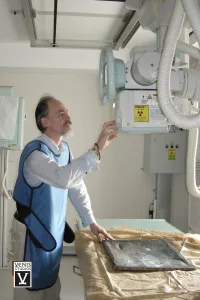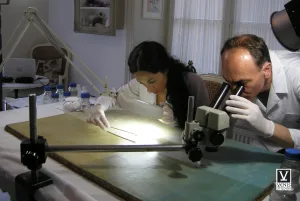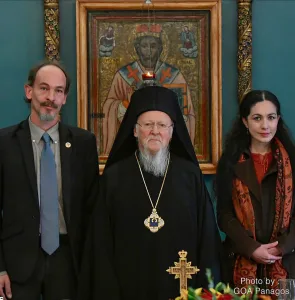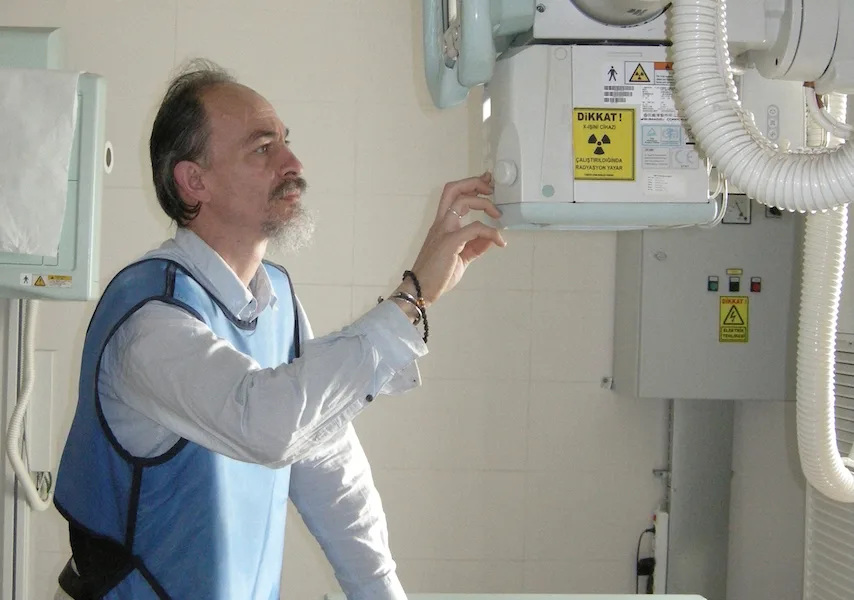At VENIS STUDIOS, the fusion of scientific research and artistic sensitivity forms the cornerstone of their approach to conservation and restoration. By utilising state-of-the-art techniques and adhering to internationally recognised standards, they ensure that the integrity and authenticity of each artefact are preserved, allowing future generations to appreciate their beauty and historical significance.
The company's commitment to the preservation of cultural heritage extends beyond borders. From the ancient ruins of Greece to the rich tapestry of Turkey, the vibrant landscapes of Cyprus, and the captivating historical sites of Jordan and the United States, VENIS STUDIOS has left an indelible mark on the global art conservation and restoration scene.
Under the visionary leadership of President Venizelos Gavrilakis, VENIS STUDIOS continues to push the boundaries of innovation and expertise in the field. President Gavrilakis' profound understanding of the delicate balance between science and art has fuelled the company's growth and earned them a reputation for excellence. His unwavering dedication to preserving our collective heritage has propelled VENIS STUDIOS to the forefront of the conservation and restoration industry.
With each brushstroke and scientific breakthrough, VENIS STUDIOS strives to safeguard the legacy of our ancestors and ensure that the stories encapsulated within these remarkable artefacts endure for generations to come. Their unwavering mission to save the past while embracing the future establishes VENIS STUDIOS as a true champion of art preservation.

Can you tell us about your career journey to becoming a senior expert conservator and restorer of historical artwork and antiquities?
Since childhood, I’ve been passionately involved with art, whether it’s creating, learning or restoring, art, objects and toys. My fascination with history, ancient civilisations, cultural heritage and museums, led me to the dream of pursuing a career in archaeology and architecture. However, it was during a pivotal discussion with an old family friend after high school that I discovered the world of art conservation and restoration.
This profession was perfectly aligned with my interests and aspirations, combining all of my passions into one. That moment became the catalyst for my journey to become a senior expert conservator and restorer.
Nearly three decades have passed since that decision, and it has been a journey filled with hard work and continuous studies. I have had the privilege of learning from and working alongside great masters and I would like to express my gratitude to my mentor Mr. Constantinos Politis, whose guidance has shaped me into who I am today. Throughout these years, our conservation and restoration have not only become my career but also my personal style and way of life. It has been a constant pursuit of knowledge and a lifelong commitment.
What sparked your interest in the field of art conservation and restoration?
What sparked me, was that through art conservation and restoration process, you bring the artworks back to life. The art conservator and restorer is an “Art Doctor” as I use to call us, in my personal terminology. By saving our cultural heritage history, through artworks, monuments, and so on, we save our past and with the knowledge of our past, we can go on to the future with the wisdom of the past. That principle sparked me and that’s my personal aim to spread it to the world.
Could you share some of the notable collaborations you have had throughout your career? How have these collaborations enriched your work?
Our latest notable important collaboration was in 2022. We were in the middle of a very important conservation and restoration project for a 14th-century Byzantine Icon when I had a call from the United States. The deacon of Eminence Archbishop of America of the Greek Orthodox Archdiocese of America Mr. Elpidoforos called me. His Eminence invited us to urgently go to New York for an emergency icon conservation and restoration project for the official visit of the Ecumenical Patriarchate Mr. Bartholomeus. We had to urgently obtain our visas, prepare and organise our portable laboratory microscopes, and so on in a week. And fly directly to New York.
It was a late 18th-century icon of Saint Nicholas, and the conservation and restoration process usually would take about two to three months. We had to less than a month to complete. That was the deadline order. I achieved the project on time, working very hard together with my wife Vaia Karagianni, who is also an art conservator and restorer. We worked almost without sleeping. The work was completed perfectly, as it should be with very scientific, precise and detailed workmanship.
Upon completion of the project, the Eminence Mr. Elpidoforos and the Ecumenical Patriarchate were very satisfied with our work. We would like to thank the Eminence Mr. Elpidoforos for his kind invitation and all his support to us.
After that collaboration, many other collaborations and new projects came along while our reputation grew worldwide.

Tell us about Venis Studios. What was the inspiration behind its establishment, and what services does it offer?
The inspiration for VENIS STUDIOS was born in 2012 after we relocated from Greece to Istanbul. Originally known as "Ieri Parakatathiki Labs," we later renamed it to VENIS STUDIOS, drawing from my name, Venizelos - Venis. This name represents my personal commitment to quality, ensuring that every art conservation and restoration project undertaken by our company upholds the highest standards.
Founded by myself and my wife, Vaia A. Karagianni, who serves as the Director/Manager, VENIS STUDIOS specialises in the conservation and restoration of historic artworks and antiquities. We merge the scientific and artistic aspects of conservation to preserve and restore fixed and portable works of art, including paintings, icon panels, antiques and historical monuments. Our projects extend beyond borders.
Our primary objective is to deepen the connection between our historical cultural heritage and the art and science of conservation and restoration. Cultural heritage belongs to all of us, and it is our responsibility to safeguard and protect it. VENIS STUDIOS strives to contribute to the preservation of artwork by employing a scientific approach that reveals their authenticity and historical significance. Through conservation and restoration, we pass on not only the artwork itself but also its profound messages of history, art, society, humanity and spirituality to future generations. By preserving our culture, we pay homage to our ancestors, as well as the painters, iconographers, sculptors and all the artists and creators of the past.
Venis Studios has multiple locations. Can you tell us about some of the different locations and the unique aspects they offer?
VENIS STUDIOS operates globally with departments in various countries, all under my personal supervision. Each national project and work is personally supervised under strict guidelines and we have a dedicated scientific committee composed of experts and scientists from around the world. Our departments are located in Greece, Cyprus, Jordan and our headquarters are based in Istanbul. Additionally, we have consultants in Saudi Arabia, Europe and the United States to cater to specific project requirements. While our departments facilitate easier access for clients, we also undertake projects worldwide, regardless of location.
Every project and work conducted by VENIS STUDIOS is backed by a lifelong quality warranty, guaranteeing the use of certified materials. Our services extend beyond the conservation and restoration of historic artworks, antiquities and monuments. For a comprehensive list of our services, interested parties can visit our website: www.venisstudios.com. Here, they will find detailed information about our services, team and our guiding principles for conservation and restoration. In essence, VENIS STUDIOS embodies the fusion of The Art and Science of Conservation and Restoration.
What are some of the key challenges you face as a conservator and restorer, and how do you overcome them?
«Give me a place to stand and I will move the earth» Archimedes the ancient Mathematician and Physicist in 287 - 212 BC. said. That’s my personal principle and the key to all challenges I am facing. Now the challenges are many according to issues and projects. But in all challenges, I implement what Archimedes said.
Can you highlight any particularly memorable or challenging restoration projects you have worked on? What made them stand out?
A recent and very important conservation and restoration project we completed was a unique discovery of a 14th to 16th-century Byzantine bilaterally (double face) icon of the “Virgin Mary of Mercy” and “The Descent to Hades”, that my wife and I discovered and we worked with our scientific team of VENIS STUDIOS. For almost a century, this Byzantine icon was been hidden behind a bronze metal box without anyone knowing its existence, save from a few very elderly residents of the area who gave oral testimonies about the existence of a very old Byzantine icon that was lost. But nothing more. It was like an old forgotten legend that sounded more like a fairy tale than a true story.
In your opinion, what are the most critical skills and qualities a conservator and restorer should possess?
The most critical skill is “comprehension”. Your mind and eyes should work like an x-ray machine, with a deep understanding from examination, process and solution to any challenge in conservation and restoration. That’s why I use to call us “Art Doctors.” As artwork conservators and restorers, we are acting as doctors who “heal” artworks. Combined with conscious conservation and restoration, we achieve the desired result.
Additionally, I will recall my master’s advice in that you must have a basic understanding of at least fifty peripheral skills as well as the knowledge related to the specific field of artwork conservation and restoration to be a master of it.
What are your thoughts on the use of modern technology, such as digital imaging and 3D printing, in the field of art conservation and restoration?
Although I prefer classical and traditional methods, I don't have a negative attitude towards them. Modern technology truly provides multi-access to a variety of issues of conservation and restoration in contrast to the classical old methods. At VENIS STUDIOS we very often use digital retouching for important historic masterpieces artworks. This way, you can add, delete or view any process on a screen until you are happy with the final result without touching the artwork. After that, the digital model is our reference for what to apply on the artwork. Modern technology provides non-destructive methods to conserve and restore artworks.
How do you stay up-to-date with the latest advancements and techniques in art conservation and restoration? Are there any specific resources or organisations you rely on?
I stay up-to-date with the latest advancements and techniques in art conservation and restoration through ongoing studies and professional engagement. This includes attending conferences, staying active on scientific conservation and restoration social media platforms and collaborating with fellow experts in the field. While I have a database of resources and organisations I can refer to, the specific ones I rely on vary depending on the particular case or project at hand.

As a senior expert in your field, what are your future goals and aspirations? Is there anything specific you would like to accomplish?
My main goal is the translation of the terminology of heritage culture conservation and restoration not to experts, but to the public. If we can understand this, we will have a different approach to cultural heritage issues. By saving our past, we discover our roots. With the knowledge of our routes as humans and humanity, we can build a better future for ourselves and our children.
How do you envision the future of art conservation and restoration? Are there any emerging trends or developments that you find particularly interesting or promising?
It should be a proper education system and the new generation should understand the importance of preserving and conserving our historic cultural heritage.
Governments, organisations and foundations should support funding action for the preservation of cultural heritage. Historic monuments or portable artworks need to be protected from being stolen and of course being sold illegally. We mustn’t forget historic cultural heritage is not an exclusive privilege of some wealthy societies or a nice décor. It's our history and belongs to all humanity.
Read also Louis Vuitton's 'Deep Time' Collection Debuts in Greece


